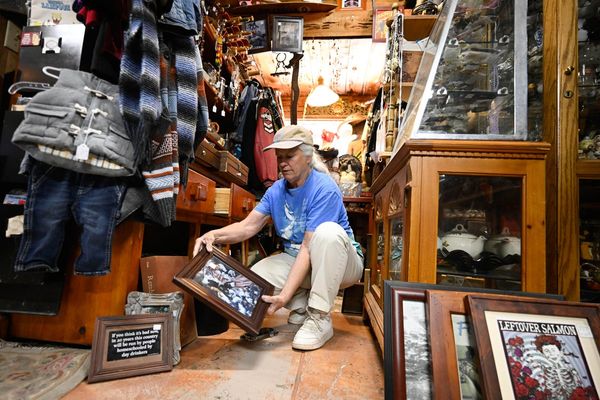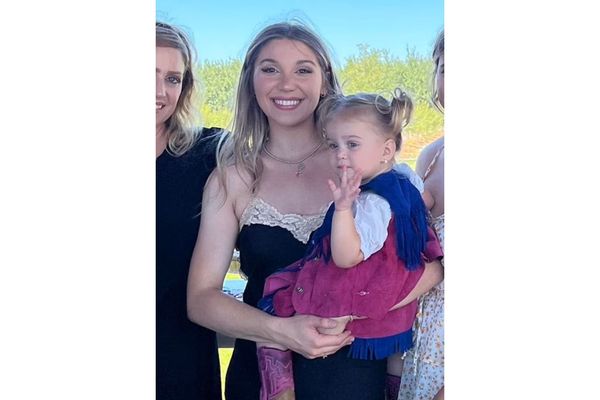WASHINGTON — A pastor, a former United Nations elections expert and a political science professor are three of the 14 people entrusted with redrawing California’s voting boundaries for next year’s midterm elections.
California voters opted for a nonpartisan group driven by citizens ahead of the last time the state underwent redistricting, the process by which legislative districts are redrawn based on population changes tracked through the Census.
Its draft maps so far have drawn criticism from some residents as the commission rejiggered the state into electoral boundaries that were totally different from ones the state has now, splitting communities citizens felt should remain together or adding to areas that some constituents feel do not match their community.
“It’s difficult for us to have to make these decisions that we have to make and if you’ve been watching for the past few days, we’re wrestling with it,” said Neal Fornaciari, a Republican commissioner from Tracy.
Others have questions about the commission’s transparency. A group of Republican voters filed a petition with the California Supreme Court last week, alleging that the commission is working with partisan legal advisers and holding meetings behind closed doors, a breach of state open meeting laws.
The state is losing a seat in the United States House of Representatives because of sluggish population growth between 2010 and now, forcing the 14 commissioners charged with the process to eliminate one congressional district while complying with other criteria that dictate the population, shape and composition of areas in new boundaries.
One of those rules is to keep a certain number of minority-majority voting districts, which the Voting Rights Act sets forth to help ethnic minority groups to elect members of their choosing.
Some lawmakers would be put in precarious positions if its current draft becomes permanent. The most recent maps, if finalized, would put Central Valley Reps. Devin Nunes and Josh Harder, for instance, in tough spots, unless each of them decided to run in a new area.
But the commission is designed to ignore a candidate’s chances of election. Voters decided that California should rely on an independent commission in 2008 and 2010 ballot initiatives to avoid gerrymandering, a tactic of splicing boundaries in ways that might be more favorable to one party over another.
The next draft of congressional maps should be finished for public review before Dec. 13. All of the maps for the various levels of governance should be finalized by Dec. 23. Final maps must be sent to the secretary of state before Dec. 27.
What are the commissioners’ backgrounds?
Five Democrats, five Republicans and four people who are not affiliated with either party serve on the commission.
Most of the commissioners have some background in public service or education, according to their applications, which include their political preferences, financial contributions and professional background, among other things. They have not donated to many political causes. And they have at least one higher education degree.
They are:
— Isra Ahmad, no party preference; a senior research evaluation specialist with Santa Clara County’s Division of Equity and Social Justice from San Jose
— Linda Akutagawa, no party preference; the president and CEO of Leadership Education for Asian Pacifics from Huntington Beach
— Jane Andersen, Republican; a civil and structural engineer from Berkeley
— Alicia Fernández, Republican; a senior special agent with the California Department of Corrections and Rehabilitation from Clarksburg
— Neal Fornaciari, Republican; a former researcher and manager at Sandia National Laboratories from Tracy
— Ray Kennedy, Democrat; a former electoral expert in the United Nations System from Morongo Valley
— Antonio Le Mons, no party preference; the chief operating officer at Skid Row Housing Trust from Studio City
— Sara Sadwhani, Democrat; an assistant professor of politics at Pomona College from La Canada Flintridge
— Patricia Sinay, Democrat; the founding consultant of Community Investment Strategies from Encinitas
— Derric Taylor, Republican; an investigator with the Los Angeles County Sheriff’s Department from Los Angeles
— Pedro Toledo, no party preference; the chief administrative officer of Petaluma Health Center from Petaluma
— Trena Turner, Democrat; a pastor and the executive director of Faith in the Valley from Stockton
— Angela Vázquez, Democrat; a policy director at The Children’s Partnership from Los Angeles
— Russell Yee, Republican; an adjunct associate professor at St. Mary’s College and theology expert from Oakland
How were commissioners chosen?
People were able to apply for the role so long as they did not have a “conflict of interest,” were registered with the same political party for at least five years leading up to their appointment and voted in at least two of the three most recent statewide elections.
A conflict of interest is state or congressional political involvement in the last decade: If they or a member of their immediate family ran for that level of office, worked with a political party or state or national campaign or was a registered lobbyist, the applicant was not eligible.
Three independent auditors from the California State Auditor’s office reviewed the applications and whittled them down to a subset for interviews. After the interviews, the panel of auditors narrowed the group to 20 individuals of each of the three political preferences. The state Legislature then reviewed those applicants and removed 24 individuals, in accordance with laws that guide the process; another individual dropped out, according to a release from the state auditor’s office.
The state auditor randomly selected three Democrats, three Republicans and two from neither party to be on the commission from the remaining applicants. Those commissioners then selected two Democrats, two Republicans and two people who were neither from the remaining application pool to join them.
None of the first eight commissioners randomly selected were Latino, which made finding commissioners to represent California’s largest ethnic group a priority, said Fornaciari, one of the randomly selected commissioners. And the commission wanted to balance out their talents and demographics, said Ahmad, another of the first eight selected to the committee.
“We really wanted to balance out the commission by race and ethnicity, geography, different demographic characteristics — which are outlined in the application itself,” said Ahmad.
The first eight members selected Akutagawa, Fernández, Sinay, Toledo, Vázquez and Yee.
Most of the application and drawing process has been over videoconference because of the coronavirus pandemic, though the commission has recently held a couple meetings in person, Fornaciari said.
Sinay said the video meetings offered windows into the regular lives of the commissioners and made a “fishtank” for citizens to watch and contribute their thoughts on the process.
For example, Sinay will be spending the final few weeks of mapping from her parents’ house. Her father was recently released from the hospital with a serious illness.
“We’re all human. We’re 14 people who’ve never done this before coming together to do this for the first time, which is part of the reason why this process is messy,” Sinay said.
———







